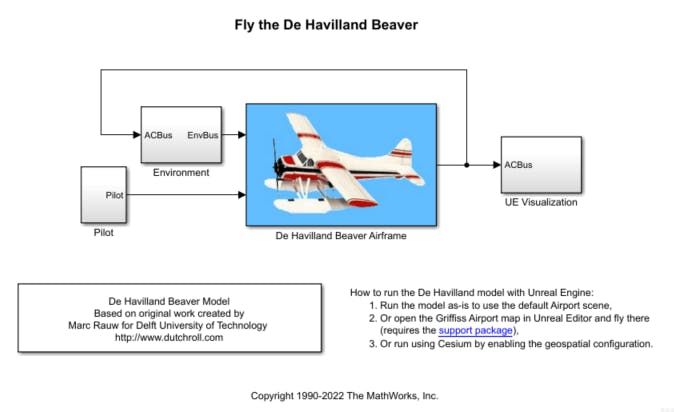MathWorks Uses Cesium for Unreal to Enhance Aerospace Vehicle Simulations
Last year, we told you about how modeling and simulation company MathWorks uses CesiumJS to visualize aerospace simulations. Now, MathWorks users can visualize aerospace vehicle dynamics and location using Cesium for Unreal. In its spring release, MathWorks included major updates to its Aerospace Blockset and UAV Toolbox with Cesium for Unreal integration.
Users visualize aerospace vehicle dynamics and location using Aerospace Blockset and Cesium for Unreal. Courtesy MathWorks.
MathWorks, known for technical computing with MATLAB and model-based designs with Simulink, has provided basic airport scenes and permitted creation of a custom scene in previous integrations with Unreal Engine. Its R2023a release in March enables users to simulate flights in other portions of Earth and match the real-world location with Cesium for Unreal.
With Simulink, engineers access customizable models of aircraft or automobiles in Blocksets to see how various systems interact instead of hand-coding every aspect of the models and environments. Toolboxes build onto MATLAB to analyze data. The Aerospace Blockset provides Simulink reference examples and blocks to model aircraft and spacecraft. With UAV Toolbox, users can design, simulate, test, and deploy controls and autonomy algorithms for UAV applications. As of March, both of those offerings included integration with Cesium for Unreal to bring 3D geospatial data to their models and simulations.
Users plan and analyze UAV flight paths with UAV Toolbox and Cesium for Unreal. Courtesy MathWorks.
Just as an accurate model of an aircraft is vital to training and simulation, so is accurate 3D geospatial context: flying (and landing!) in Boston is different from Kathmandu. MathWorks’ integration with Cesium for Unreal brings together high-quality models, high-fidelity graphics rendering, and geospecific representations of Earth. Cesium ion subscribers access curated 3D content and can host and tile their own massive datasets as 3D Tiles for streaming to Unreal Engine.
Among MathWorks’ many resources are tutorials for visualizing in Cesium and for flying the De Havilland Beaver, which includes modeling the bush plane and flying it through user-selected locations in Cesium for Unreal.

Follow MathWorks’ tutorial for modeling and flying the De Havilland Beaver using Cesium for Unreal. Courtesy MathWorks.
Real-world data enables MathWorks users to more accurately represent and explore vehicle dynamics and plan flight paths. To get started with bringing 3D geospatial data to your aerospace and UAV simulations, follow the Cesium for Unreal tutorials.